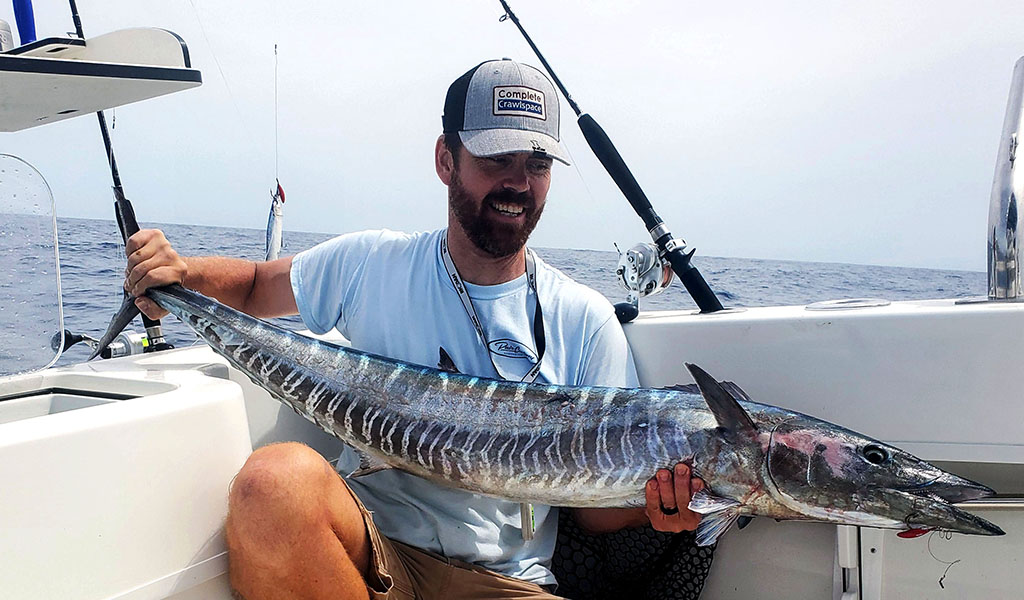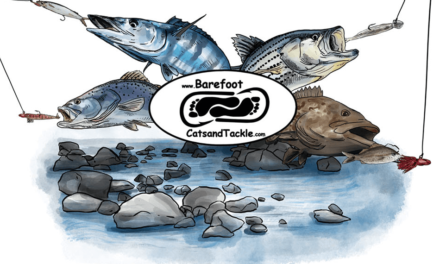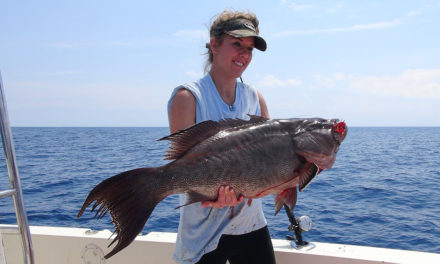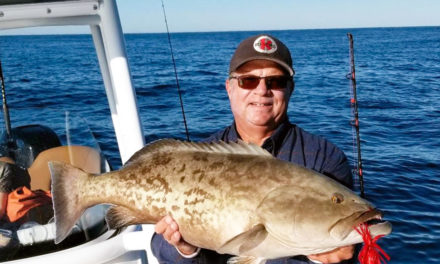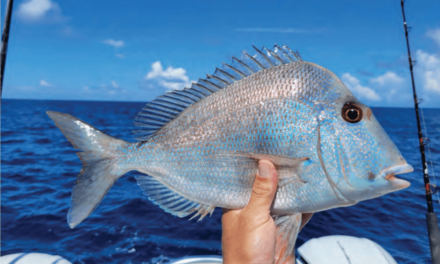Squid could and should be called the “rice of the oceans.
I’ve said it before, and I’ll say it again: wahoo and tuna don’t wear Maui Jims. Instead, they use depth to regulate the sunlight they take in.
So, while normally trolling at 6 to 8 knots and high-speed trolling at 15 to 20 knots are good things at first light and up to 10:30 or 11 a.m., it’s time to slow down once the sun gets directly overhead. I slow it to a crawl and even fish some baits deep under a sliding cork on the drift. Spreading baits across the water column is the
best way to continue that morning bite when the mid-day doldrums arrive.
Darker-colored baits like red-and-black or purple-and-black work well when fish are looking up to feed. The dark silhouettes of darker-colored baits show up well against the bright surface. Yet, it doesn’t make sense to continue trying to convince fish to come to the surface to eat a bait 50 or 75 feet above them when pelagics drop down in the water column; it is better to put a bait right in the “strike zone” where they are.
Several baits provide a natural presentation down deep, but a big beautiful squid checks all the boxes on this one. Squids rise to the surface at night and descend to the depths as the sun gets higher, just like the fish. They are a natural choice, as you are trying to match the hatch, so to speak. Nothing in all the seven oceans of the world is more common than the squid. Squids could and should be called the “rice of the oceans.”
Frozen squid is readily available for bait, and everything in the ocean eats them. I have the ultimate example of this: one day, we were on anchor grouper fishing when a couple of nice dolphin swam under the boat 20 to 30 feet below. I could tell they were nice ones and started throwing out cigar minnows and sardines to get them fired up. But they didn’t want any part of the free minnows. So, I pulled out an entire frozen squid, hooked it up on light tackle, and threw it out about 50 feet. Then, I just let it start sinking. After they let the minnows go by and drop out of sight, the largest dolphin of the pair saw that sinking squid and inhaled it! It shows they will eat a squid when all else fails.
The other good news is a squid is so easy to rig to swim perfectly.
Whether you are fishing a natural frozen squid, a live one, or an artificial one, just slow down a little to allow the bait to get down to the level where the fish are during the middle of the day for some serious bites.
SALTWATER TACKLE YOU MAY WANT TO TRY:
7/0 and 11/0 J-Hook Chin Weights: Target fish include Tuna, Wahoo, Mahi or Common Dolphin, King Mackerel, Wahoo, and more. Easy to rig!
4 oz. Crab Decoy Jig: Target fish for Striped Bass, nearshore Drum, Snook, Grouper, west coast bottom fish, and more.
4 oz. Tuna Squid Decoy Jig: From the eastern, western, Alaskan, and gulf coasts, target fish include: Tuna, Dolphin, Wahoo, Fluke, Flounder, Striped Bass, Seabass, Amberjack (east coast), Yellow Tail (west coast), California White Sea Bass (west coast), Grouper, Snapper, Halibut, Ling cod, and all Alaskan bottom fish.
8 oz. - 12 oz. 10/0 Squid Decoy Jig: Catch BIG Grouper, Amberjack, Giant Stripers, and more.

